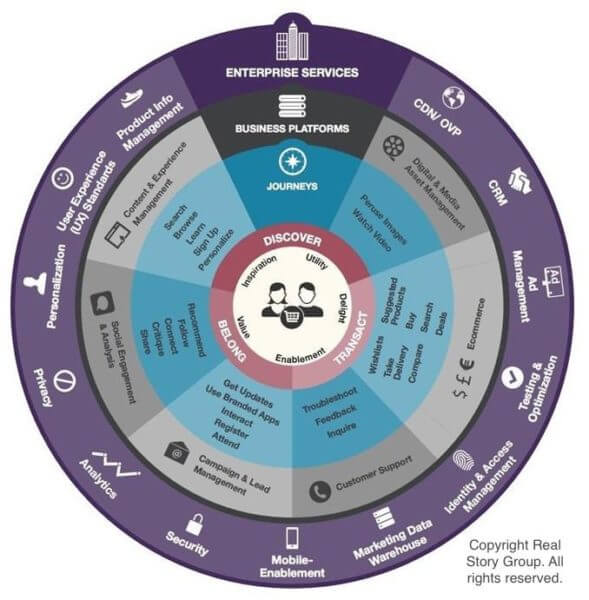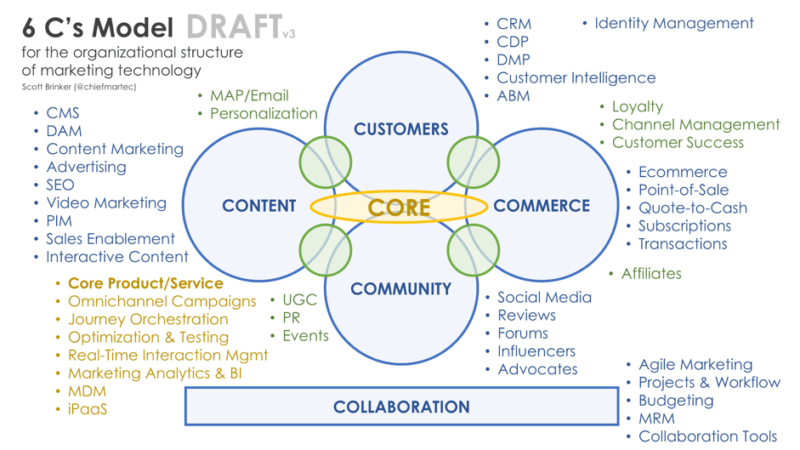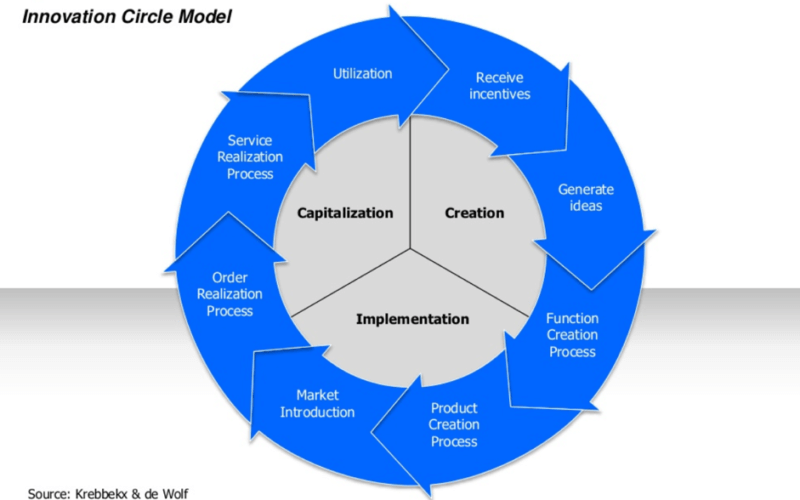3 management models that help streamline today’s martech operations
Contributor Andy Betts outlines three ways of thinking about your marketing department in this age of rapid innovation.
The field of streamlined marketing operations has become vital in martech to bridge the gap between what consumers expect and what they receive from a brand. Marketing operations does this through a combination of technology, process and human resources, with the objective of optimizing the end-to-end marketing cycle.
2017 saw record investment of over $14 billion in the martech sector, and this year has already seen the martech landscape expand to almost 7,000 vendors. There is more potential at our fingertips than ever before, but navigating this landscape is also increasingly challenging.
While marketers grapple with this scenario, consumer expectations are unrelenting, and their hardware and software usage behaviors continue to adapt daily. Businesses are, quite correctly, placing an emphasis on personalizing the customer experience at all stages — a task that is made possible by an ever-evolving list of sophisticated technologies.
However, a jarring juxtaposition can arise between consumers demanding more seamless experiences and an increasingly fragmented technology landscape. To get the most out of the tools at our disposal, a marketing department must run smoothly, with technology enabling internal processes and improving the external-facing product.
To deliver on this, just some of the current challenges senior marketers must surmount are:
- Managing cross-functional teams.
- The convergence of martech and ad tech.
- Supply chain management.
- Vendor selection and management.
- Technology integrations.
- Data security and integrity.
- Digital performance across all media.
- Achieving true customer-centricity.
- Creation of agile, reproducible processes.
The field of marketing operations has naturally grown in importance in this context. McKinsey’s David Edelman and Jason Heller have said, “When done well, we’ve seen marketing operations provide a 15 to 25 percent improvement in marketing effectiveness.”
Doing it well is increasingly rewarding, but increasingly complex, too.
Martech accounts for 33 percent of the average marketing budget, according to Gartner, and yet a Curata survey found that only 40 percent of marketers have integrated their sales and marketing automation systems, so the industry has some room for improvement.
The sheer variety of martech stacks submitted to the 2017 Stackie Awards revealed the ever-changing nature of marketing models and their component parts.
One missing part of the puzzle is the application of an effective management model that fits our current context. In a time of constant flux, many of the existing models are anachronistic in their rigidity.
Below are three models that can help deliver the seamless, engaging experience consumers expect from a brand today.
1. The 6 C’s model
As a proposal to bring some structure to a complex ecosystem, Scott Brinker’s 6 C’s Model is a helpful place to start.
The 6 C’s are as follows:
- Customers: all the data about customers/prospects in our universe.
- Content: all the content we produce and distribute in all channels.
- Community: interactions with customers as a group, e.g., social media.
- Commerce: capabilities to directly sell our products and services.
- CORE: our product/service and campaigns/data that cross all of marketing.
- Collaboration: the tools we use for collaborating inside marketing.
Each of these domains relates to an essential component of a modern marketing department and does not prioritize one over another. This imbues it with a universality that can be applied to most organizations.
In the image below, some common technology categories have been mapped against this model.
Of interest are the intersections between each domain, as the 6 C’s Model sets out to maintain some distance between sections while still setting aside space for the points at which different specialties must work together.
There is an innate tension in any management model, as applied to a modern marketing team. It is essential to forge collaboration, but this must be achieved without arriving at homogeneity. Specialties need to be maintained without leading to a siloed approach.
The 6 C’s Model takes this into account and respects the boundaries between the increasing number of considerations in a marketing department.
Nevertheless, one potential drawback of this model is that the “Core” section essentially becomes a convenient bucket into which to place any ambiguous items. It is the role of the marketing operations specialist to maintain some discipline around this categorization, as this model works best when the sections are clearly defined. Additionally, this model encourages the requisite agility for true customer-centricity, which can be lost in IT-driven approaches.
Many traditional management models retain their potency as one-off exercises, but they strain under the pressure of the modern working environment. A fitting marketing management model for our times will maintain a customer-centric focus and encourage collaboration, without disrupting workflows through the heavy-handed application of management structures.
The 6 C’s Model excels in the following areas:
- Managing cross-functional teams.
- Vendor selection and management.
- Technology integrations.
2. The Consumer-Driven model
Delivering scalable, personalized, omnichannel consumer experiences is perhaps the foremost ambition of the modern marketing department. A clear focus on the consumer is, of course, a central consideration in achieving this, with technology an increasingly powerful enabler.
It is therefore arguable that a product- or technology-led management model is no longer the most effective approach. True customer-centricity delivers on its promise to put the audience at the heart of every aspect of the brand.
The image below represents an attempt to rearrange the components of a marketing strategy around the customer experience:

Image Source: Real Story Group on ChiefMartech.com
Moving out from the center, we see that the path toward technology is framed around desires such as “Get Updates” or “Watch Video.” The gray sections are platforms, while applications are marked in purple. However, everything starts with audience personas, demand states and preferences. Digital media should meet these requirements in the most engaging format at the most relevant time; technology should not create friction but should provide the platform for a brand-consumer interaction.
This consumer-driven model should help provide healthy impetus to deliver content as seamlessly as possible. In addition, this concept should encourage a fastidious mindset when it comes to data security and quality; everything should be considered through the lens of the end consumer.
As attribution increases in accuracy and we gain greater insight into the effectiveness of all marketing efforts, the consumer-driven model is increasingly influential. Combined with a metric like customer lifetime value (CLV), a commercial value can also be applied to its impact.
This makes the Consumer-Driven Model a very beneficial complement to an IT- or product-focused management model and has the following strengths:
- Supply chain management.
- Customer-centricity.
- Data security and quality.
3. The Cyclic Innovation Model (Berkhout)
The pace of technological advancement is far from isolated to the martech space. Consumers adopt new technologies frequently and, in the process, their desires and requirements change. Keeping up with this constant flux — and deciding which trends are worth investing in — are two significant challenges for any marketing operations specialist.
These streams of activity feed directly into product development, which, by its nature, is somewhat concrete. Based on the feedback loops contained in every human cell, the Cyclic Innovation Model, described by Dutch scientist A.J. Berkhout, brings speed to the product development cycle combined with effective test-and-learn processes.
Its continuous nature generates a healthy mindset to product creation and improves on the linear models that have typically dominated this space.
At the idea-generation and product-creation stages, numerous checks and balances should be introduced alongside the prototyping of the product. This ensures the comprehensive approach needed when bringing an idea to life, as an extensive checklist can be created by the marketing operations team.
All external feedback (technological changes and consumer feedback, for example) is then used to iterate and improve the product or service. As such, this provides a rare blend of rigorous process and flexibility that is in keeping with the modern consumer’s behavior, similarly to the Agile Development concept.
Of course, this circle must be fed with constant research into market trends and competitor activity. The aim is to mitigate the myopia of a brand- or product-led approach to the market.
This model is most suitable for:
- Managing cross-functional teams.
- Supply chain management.
- Agile, reproducible processes.
Conclusion
The role of marketing operations is to create cohesion among multiple departments and ensure that brands deliver what consumers expect to receive.
Its importance cannot be understated, and it will only grow as consumer expectations rise. In this context, marketing teams need to be agile and must use technology to remove, rather than create, friction in consumer interactions.
Selecting the right technology stack is vital, but not sufficient in isolation. Marketers must integrate these technologies with each other and drive collaboration across a range of functions while keeping a consistent focus on the consumer. Thus, new approaches to management will be just as important as the technology we invest in over the next five years.
Opinions expressed in this article are those of the guest author and not necessarily MarTech. Staff authors are listed here.
Related stories

